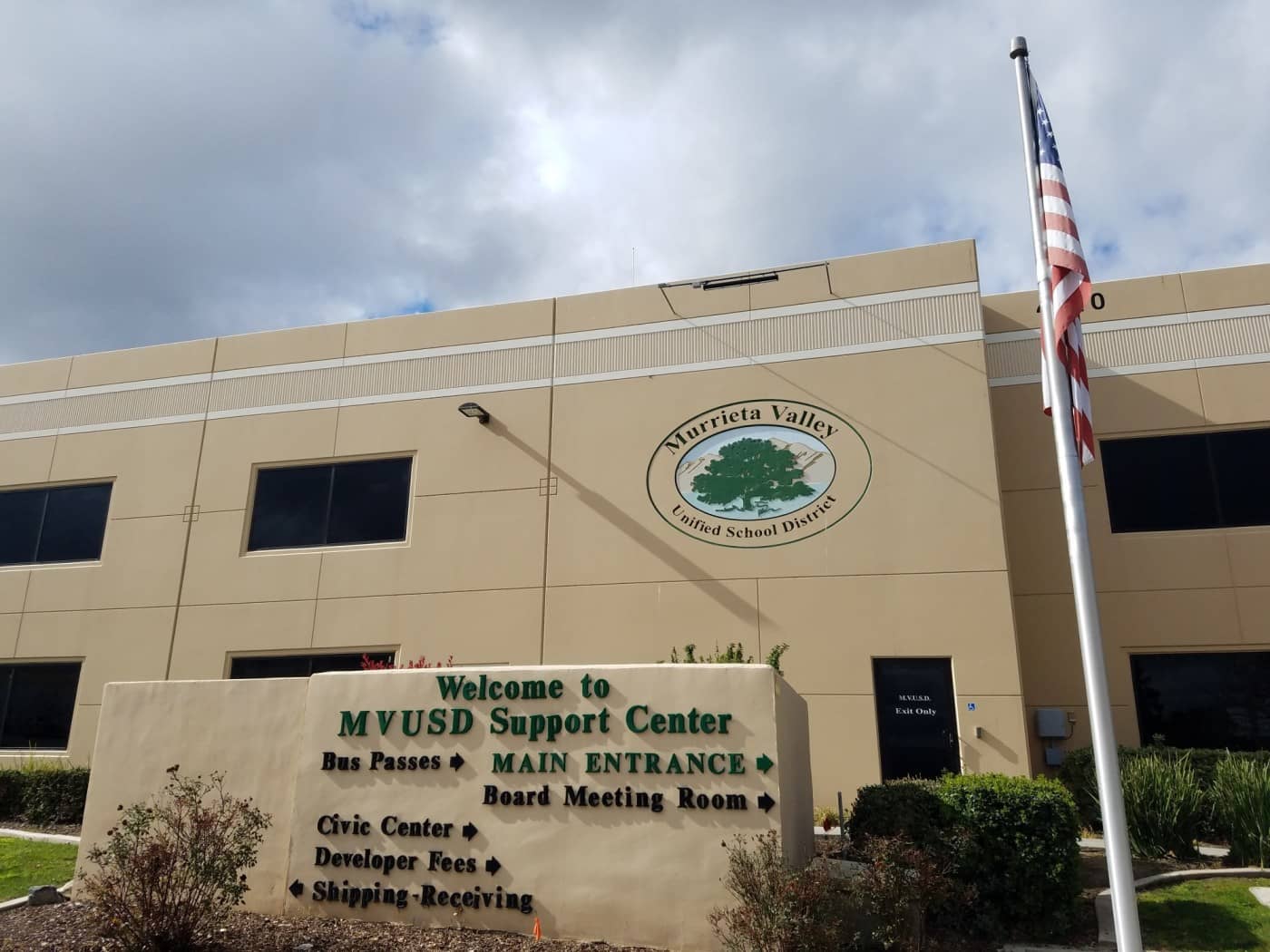The Murrieta school board has decided for the second time not to put a bond measure on the ballot on a split vote during a contentious meeting.
The Murrieta Valley Unified School District board voted 3-2 Thursday night, Aug. 8, against letting voters decide on a $200 million bond in November.
Trustees Paul Diffley, Linda Lunn and Nancy Young voted in favor of putting the measure forward. But members Nick Pardue and Julie Vandegrift voted no. The proposal failed because four of five board members would have needed to agree to place the measure on the ballot.
Had it gone to an election, 55% of voters would have needed to vote yes to approve the measure.
General-use bonds are used for construction, rehabilitation, buying and leasing property and furnishing school facilities.
Young said that, without the bond, the district will have to redraw school attendance lines and may have to go to double sessions or year-round school, which she said would be difficult for families. She encouraged fellow board members to let voters decide on Election Day.
“You do not need to be in favor of a bond to let the community vote,” Young said.
Diffley, the board president, said the board needed to address the problems in front of it — a predicted growth in students and a lack of space.
“I think that is something that needs to be considered,” Diffley said. “We are not talking 10 years down the road ‘let’s get it sorted out.’ We are talking two years.”
He said the list of projects to be funded by a measure was not specific because there are things for which the board and district cannot plan.
“Things change, rains come, things collapse, roofs that are meant to last don’t, you can’t predict those things,” Diffley said.
Vandegrift said that there were still parts of the proposed bond that were not clear, and that the project list was not detailed enough and did not comply with Prop. 39.
She said trustees needed more time to study the bond and that, even if they sent it to voters and it won approval, there was no guarantee the district would receive matching funds from the state under Prop. 2.
Pardue said the board is not defunding schools; that is coming from the state. Murrieta Valley schools don’t receive the same amount of funding as other districts in the state and the community is left to pick up the slack, he said.
“I am very frustrated that we pay such high taxes and that we as Murrieta citizens have to pass bond after bond,” Pardue said.
In June, the board voted to turn down the idea of putting a bond on the ballot. The measure, which would have replaced a bond expiring later this year, would have brought in $198,000,000 to the district, estimated at $26 per $100,000 of a property’s assessed value.
By the end of the year, the board will have three active bonds.
Measure K, passed in 2002, is a $98 million bond set to expire in 2029. Measure E, a $120 million bond passed in 2006 will expire in 2033. And Measure BB, a $98 million bond passed in 2014, is expected to be paid off in 2050.
A new bond measure would have been used to build a new school and address potential overcrowding, Superintendent Ward Andrus said in a July 31 interview.
Without the bond, the district has shifted focus to other plans to address projected crowding in elementary and middle schools on the west side of town.
In a special July 31 meeting, the board heard from a consultant about the possibility of redrawing school boundaries to accommodate more students at elementary and middle schools.
The community was split on the issue.
Parents favoring a bond said they wanted to ability to vote in November and said the measure would have been imperative to addressing crowding and aging facilities.
“I can tell you very clearly I am your constituent and I appreciate your position, but I would appreciate the ability to vote on my kids’ schools,” district parent Jeremy Murphy said.
Community member Steve Briggs said: “This is about the students, this isn’t about the taxpayers or your personal opinions.”
Emily Brooks, a Murrieta parent, said those questioning what the district did with previous bonds had only to look around the board room at the school banners.
“Every single one of these banners represents something that was done,” Brooks said. “… If we want to keep up this achievement, we have to pass this bond measure.”
She said that the district needs the bond to respond to crowded classrooms and overwhelmed teachers.
On the other side of the issue were parents and community members who expressed concern over what they called a lack of transparency in the list of proposed bond projects and the financial burden they said would be placed on the community.
Related Articles
Riverside OKs $208,300 to back health initiative
San Bernardino settles with one-time city manager candidate for $800,000
New Riverside school board member picked to replace Tom Hunt
San Bernardino County nurses call on supervisors to invest in recruitment
Renewable energy storage project launches in Grand Terrace
“At present you are simply ill equipped, the project list you submitted several months ago is woefully inaccurate,” Jack Guerrero, a past candidate for the Riverside County Board of Supervisors, said.
Guerrero asked the board to push a bond to a later date when it was more prepared. For now, he said the district did not have a specific list of projects and approving a measure would be like signing a blank check. A recession is predicted in the next few years, he said, and a bond would burden a community already burdened by a high cost of living.
John Leonard, a community member, said that the proposal lacked transparency and that the district should be doing more with its more than $300 million budget and not look to add more costs to the public.
“This nation has become addicted to borrowing money and it will be our ruin,” Leonard said.
This is a developing story. Check back for updates.



